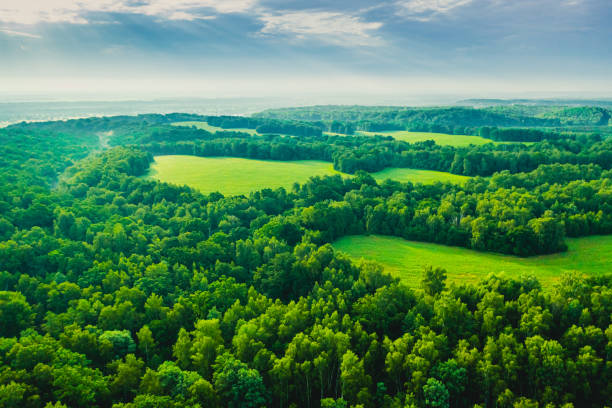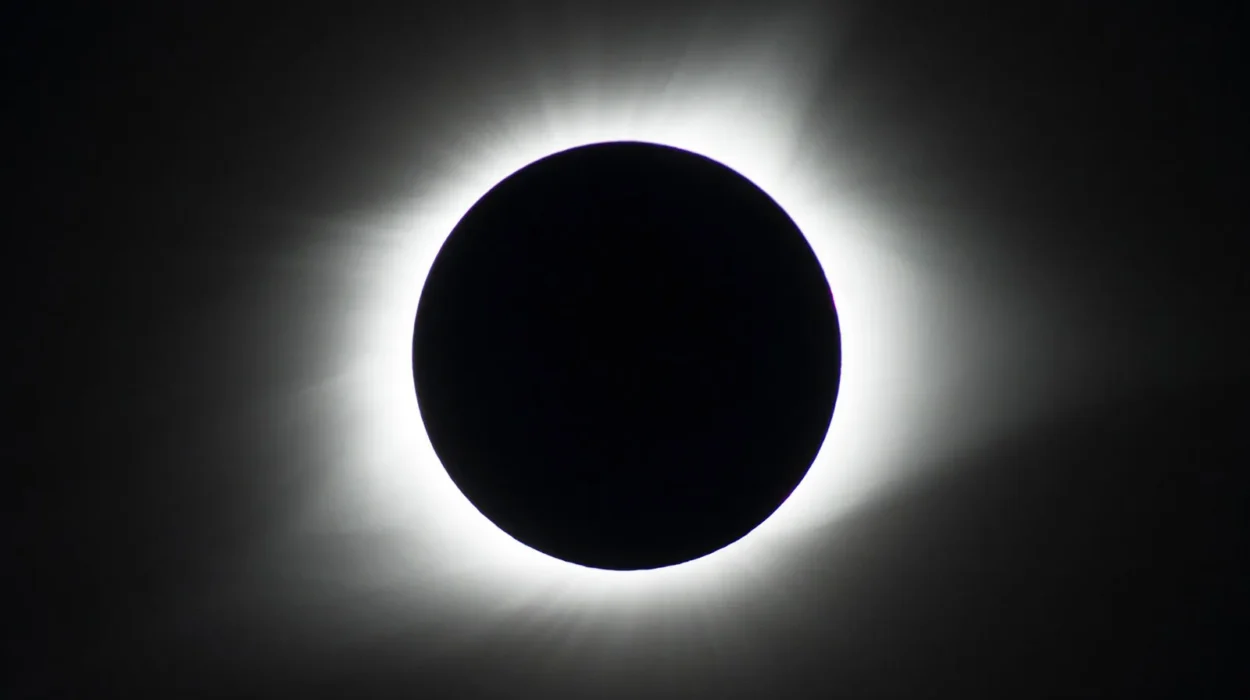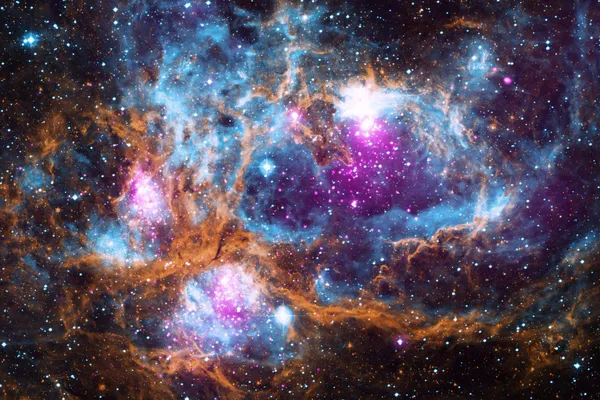The Earth has always changed. For billions of years, it has undergone dramatic shifts—ice ages and warm periods, extinctions and resurgences, upheavals and stabilizations. But something unusual is happening today. The pace of change has accelerated, and this time, the driver is not volcanoes, asteroids, or subtle shifts in the Earth’s orbit. It’s us—human beings.
Climate science seeks to understand the forces that shape our planet’s environment—its atmosphere, oceans, ice caps, forests, and everything in between. Today, it is more than a field of academic study; it is the front line in a planetary emergency. The science is clear, the evidence compelling, and the need to act urgent. Yet, climate science is often misunderstood, misrepresented, or oversimplified. In this comprehensive article, we’ll peel back the layers of climate science, explain how it works, what it tells us, and why it matters more than ever.
What Is Climate, and How Does It Differ from Weather?
To understand climate change, we must first distinguish between two commonly confused terms: weather and climate.
Weather refers to short-term atmospheric conditions. It’s what you experience on a daily basis—rain, sunshine, wind, snow, temperature. It can change hour to hour, even minute to minute. Climate, on the other hand, is the long-term average of weather over time and space. It encompasses the patterns we observe over decades, centuries, or even millennia.
While weather is a snapshot, climate is the full photo album. When scientists talk about climate change, they’re not referring to an unusually hot day or a particularly cold winter—they’re talking about long-term shifts in patterns across the globe.
The Climate System: Earth’s Delicate Balance
Earth’s climate system is complex and interconnected. It consists of the atmosphere (the air), the hydrosphere (water), the cryosphere (ice), the lithosphere (land), and the biosphere (life). These components interact in intricate feedback loops, where a change in one can trigger a cascade of effects in the others.
The sun provides the energy that drives the climate system. About 30% of incoming solar radiation is reflected back into space by clouds, aerosols, and the Earth’s surface, especially ice and snow. The rest is absorbed by the land and oceans, warming the planet. That energy is then radiated back as infrared heat.
Here’s where greenhouse gases come in. These gases—primarily carbon dioxide (CO₂), methane (CH₄), nitrous oxide (N₂O), and water vapor—trap some of that outgoing heat and keep the planet warm enough to support life. Without them, Earth would be a frozen wasteland with an average temperature of about -18°C (0°F). This natural greenhouse effect is essential for life, but when intensified by human activities, it becomes a problem.
The Greenhouse Effect and Its Human Amplification
Since the Industrial Revolution, human activities—especially burning fossil fuels (coal, oil, and natural gas)—have released vast amounts of CO₂ into the atmosphere. Deforestation, agriculture, and industrial processes add methane and nitrous oxide. These human-produced greenhouse gases (GHGs) enhance the natural greenhouse effect, trapping more heat and disrupting the planet’s energy balance.
Carbon dioxide is the most significant of these gases, not because it’s the most potent per molecule (methane is about 25 times stronger), but because it’s the most abundant and persistent. It can remain in the atmosphere for centuries, meaning today’s emissions will affect generations to come.
Measurements from Mauna Loa Observatory in Hawaii show that CO₂ levels have risen from about 280 parts per million (ppm) before industrialization to over 420 ppm today—a level not seen in over 3 million years. This rise in greenhouse gases is the central driver of modern climate change.
The Evidence for Climate Change: What the Science Shows
Climate change is no longer a hypothesis—it’s a reality supported by overwhelming evidence across multiple disciplines.
Global temperature records show that the Earth’s surface has warmed by about 1.2°C (2.2°F) since the late 19th century, with most of the warming occurring in the past 40 years. The last decade was the hottest on record, and each of the last nine years ranks among the ten hottest.
But warming is just one piece of the puzzle. Other indicators include:
Glacier retreat and ice melt across Greenland, Antarctica, and mountain ranges worldwide; shrinking Arctic sea ice, which has declined dramatically in both extent and thickness; rising sea levels from both melting ice and thermal expansion of seawater; increased frequency and intensity of extreme weather events—heatwaves, wildfires, hurricanes, floods, and droughts; and shifting ecosystems and species migration as organisms respond to changing climates.
These changes are consistent with what climate models predicted decades ago. In fact, the accuracy of these models in forecasting future warming lends even greater confidence to the underlying science.
Climate Models: Peering into Earth’s Future
Climate models are mathematical representations of Earth’s climate system, built on the laws of physics, chemistry, and biology. They simulate how energy moves through the atmosphere and oceans, how clouds form, how ice melts, and how ecosystems interact. Scientists use them to predict future climate scenarios under different assumptions—such as continuing current fossil fuel use versus aggressive mitigation.
There are many types of models, from simple energy balance models to complex Earth System Models that simulate every aspect of the biosphere and human influence. These models don’t just predict temperature—they estimate rainfall patterns, ocean currents, carbon uptake by forests, and even how storms may evolve.
One of the strengths of climate models is their ability to recreate past climate conditions. When scientists input historical greenhouse gas levels, volcanic eruptions, and solar activity, the models closely reproduce observed climate changes over the 20th century. This ability to “predict the past” gives us confidence in their ability to foresee the future.
Feedback Loops: The Wild Cards of Climate
Feedback loops are processes that can either amplify (positive feedback) or dampen (negative feedback) climate change. These loops are critical because they can accelerate changes in unpredictable ways.
One major positive feedback is the ice-albedo effect. Ice and snow reflect sunlight, helping keep the planet cool. As they melt, darker land and ocean surfaces absorb more heat, causing further warming and more melting. This creates a vicious cycle.
Another is the release of methane from thawing permafrost. As the Arctic warms, frozen soils rich in organic carbon begin to thaw and decompose, releasing methane—a potent greenhouse gas—into the atmosphere. This can significantly amplify global warming.
Cloud feedbacks, forest diebacks, and ocean circulation changes are other examples. These mechanisms are complex and not fully understood, which adds uncertainty—but also urgency—to climate projections.
Ocean Impacts: The Planet’s Heat Sink
The oceans play a crucial role in regulating climate. They absorb over 90% of the excess heat trapped by greenhouse gases and about 25% of human-emitted CO₂. But this buffering comes at a cost.
Warmer oceans fuel stronger tropical storms and hurricanes. They also lead to coral bleaching, where the symbiotic algae that give corals their color—and food—are expelled, often resulting in mass die-offs. Entire reef ecosystems, such as Australia’s Great Barrier Reef, are under severe threat.
Ocean acidification is another consequence of CO₂ absorption. When CO₂ dissolves in seawater, it forms carbonic acid, which lowers the water’s pH. This makes it harder for marine organisms like shellfish, corals, and plankton to form calcium carbonate shells and skeletons. Acidification thus threatens the entire marine food web.
Rising sea levels, caused by both melting land ice and thermal expansion of seawater, endanger coastal communities and low-lying nations. Already, some islands are experiencing saltwater intrusion, loss of freshwater resources, and relocation pressures.
The Human Dimension: Climate Inequality and Vulnerability
Climate change does not affect everyone equally. Ironically, those who contribute the least to the problem—often in low-income nations—are the most vulnerable to its impacts. Small island states face existential threats from sea level rise. Drought-prone regions in Africa and Asia face food and water insecurity. Climate-related migration is becoming a reality, displacing millions each year.
Even within wealthy nations, the effects of climate change are uneven. Marginalized communities often live in areas more exposed to environmental hazards, have fewer resources to adapt, and suffer greater health impacts from heatwaves, pollution, and disasters.
This disparity has led to growing calls for climate justice—recognizing that climate action must be equitable and inclusive. Solutions must not only reduce emissions but also support those most at risk, ensuring that the transition to a sustainable future leaves no one behind.
Solutions: Mitigation, Adaptation, and Innovation
Addressing climate change requires a two-pronged approach: mitigation (reducing the causes) and adaptation (coping with the effects).
Mitigation involves cutting greenhouse gas emissions by transitioning to clean energy sources like wind, solar, and hydro. It also includes improving energy efficiency, changing agricultural practices, protecting forests, and developing carbon capture technologies.
Adaptation means preparing for the inevitable impacts already baked into the system. This includes building flood defenses, creating drought-resistant crops, developing early warning systems, and redesigning cities to handle heatwaves.
Technological innovation is also key. Advances in battery storage, electric vehicles, green hydrogen, and smart grids are transforming energy systems. Precision agriculture, artificial photosynthesis, and regenerative farming offer sustainable ways to feed a growing population.
Crucially, individual behavior matters too—reducing waste, choosing low-carbon transport, supporting sustainable products, and voting for climate-conscious policies all contribute to a collective response.
The Role of Policy: Global Agreements and Local Action
Governments play a central role in shaping the climate future. International agreements, such as the 2015 Paris Agreement, aim to limit global warming to “well below 2°C,” with efforts to stay below 1.5°C. While ambitious, these targets require unprecedented global cooperation and rapid emissions cuts.
Nationally Determined Contributions (NDCs) are the pledges countries make under the Paris Agreement. But current commitments are not enough—they put the world on track for about 2.5 to 3°C of warming, which would have catastrophic consequences.
Local governments and cities are increasingly taking the lead, implementing climate-friendly policies even when national action lags. Urban design, public transit, building codes, and green spaces can make cities more resilient and reduce emissions.
Finance is another lever. Shifting investments away from fossil fuels and toward sustainable industries can accelerate the green transition. Climate risk disclosure, carbon pricing, and subsidies for clean energy are policy tools gaining traction.
Public Perception and Misinformation: The Battle for Understanding
Despite the overwhelming scientific consensus—over 97% of climate scientists agree on human-caused warming—public understanding is still uneven. Misinformation, political polarization, and vested interests have muddied the waters.
Climate denial has shifted from outright rejection to more subtle forms—delaying action, promoting false solutions, or exaggerating costs. Social media has amplified these voices, spreading doubt and confusion.
Effective communication is essential. Science must be accessible, engaging, and grounded in values people care about—health, jobs, justice, and the future of their children. Stories, not just statistics, are powerful tools in bridging divides and inspiring action.
The Future We Choose: Hope in a Warming World
While the challenges are daunting, there is reason for hope. The tools, knowledge, and technologies to solve climate change already exist. Renewable energy is now cheaper than fossil fuels in many places. Youth movements, indigenous leadership, and grassroots campaigns are pushing climate to the forefront. Businesses are greening supply chains. Cities are planting forests and banning cars from centers. Nations are beginning to think in centuries, not just election cycles.
The climate crisis is, at its heart, a moral crisis. It asks us to consider not only what kind of planet we want to live on but what kind of people we want to be. Will we act boldly, cooperatively, and compassionately—or continue on a path of short-term gain and long-term loss?
The science tells us where we are. The future depends on where we go next. Every tenth of a degree matters. Every tree planted, every policy changed, every person educated—it all counts. Climate change is not someone else’s problem. It is all of ours, and together, we can choose a better future.






